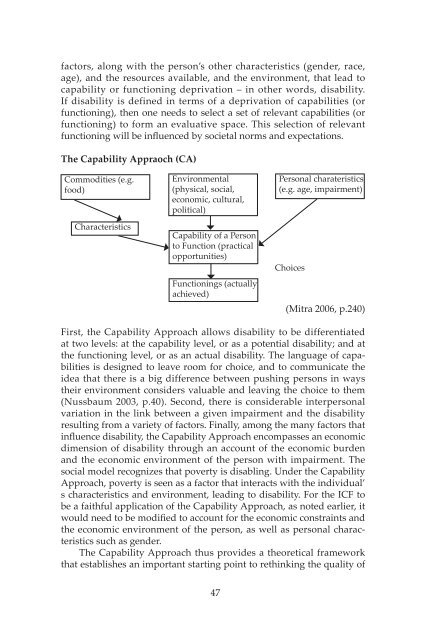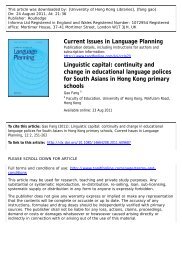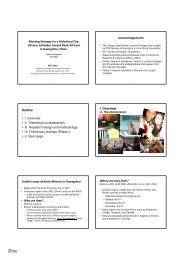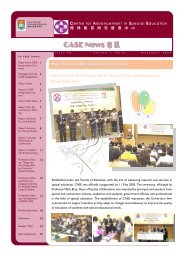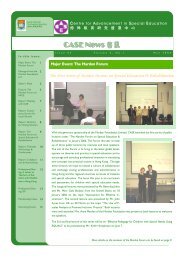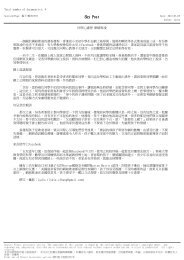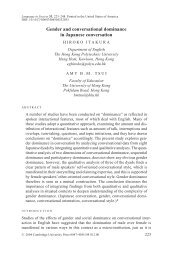Comparative Education Bulletin - Faculty of Education - The ...
Comparative Education Bulletin - Faculty of Education - The ...
Comparative Education Bulletin - Faculty of Education - The ...
You also want an ePaper? Increase the reach of your titles
YUMPU automatically turns print PDFs into web optimized ePapers that Google loves.
factors, along with the person’s other characteristics (gender, race,<br />
age), and the resources available, and the environment, that lead to<br />
capability or functioning deprivation – in other words, disability.<br />
If disability is defined in terms <strong>of</strong> a deprivation <strong>of</strong> capabilities (or<br />
functioning), then one needs to select a set <strong>of</strong> relevant capabilities (or<br />
functioning) to form an evaluative space. This selection <strong>of</strong> relevant<br />
functioning will be influenced by societal norms and expectations.<br />
<strong>The</strong> Capability Appraoch (CA)<br />
Commodities (e.g.<br />
food)<br />
Characteristics<br />
Environmental<br />
(physical, social,<br />
economic, cultural,<br />
political)<br />
Capability <strong>of</strong> a Person<br />
to Function (practical<br />
opportunities)<br />
Functionings (actually<br />
achieved)<br />
47<br />
Personal charateristics<br />
(e.g. age, impairment)<br />
Choices<br />
(Mitra 2006, p.240)<br />
First, the Capability Approach allows disability to be differentiated<br />
at two levels: at the capability level, or as a potential disability; and at<br />
the functioning level, or as an actual disability. <strong>The</strong> language <strong>of</strong> capabilities<br />
is designed to leave room for choice, and to communicate the<br />
idea that there is a big difference between pushing persons in ways<br />
their environment considers valuable and leaving the choice to them<br />
(Nussbaum 2003, p.40). Second, there is considerable interpersonal<br />
variation in the link between a given impairment and the disability<br />
resulting from a variety <strong>of</strong> factors. Finally, among the many factors that<br />
influence disability, the Capability Approach encompasses an economic<br />
dimension <strong>of</strong> disability through an account <strong>of</strong> the economic burden<br />
and the economic environment <strong>of</strong> the person with impairment. <strong>The</strong><br />
social model recognizes that poverty is disabling. Under the Capability<br />
Approach, poverty is seen as a factor that interacts with the individual’<br />
s characteristics and environment, leading to disability. For the ICF to<br />
be a faithful application <strong>of</strong> the Capability Approach, as noted earlier, it<br />
would need to be modified to account for the economic constraints and<br />
the economic environment <strong>of</strong> the person, as well as personal characteristics<br />
such as gender.<br />
<strong>The</strong> Capability Approach thus provides a theoretical framework<br />
that establishes an important starting point to rethinking the quality <strong>of</strong>


